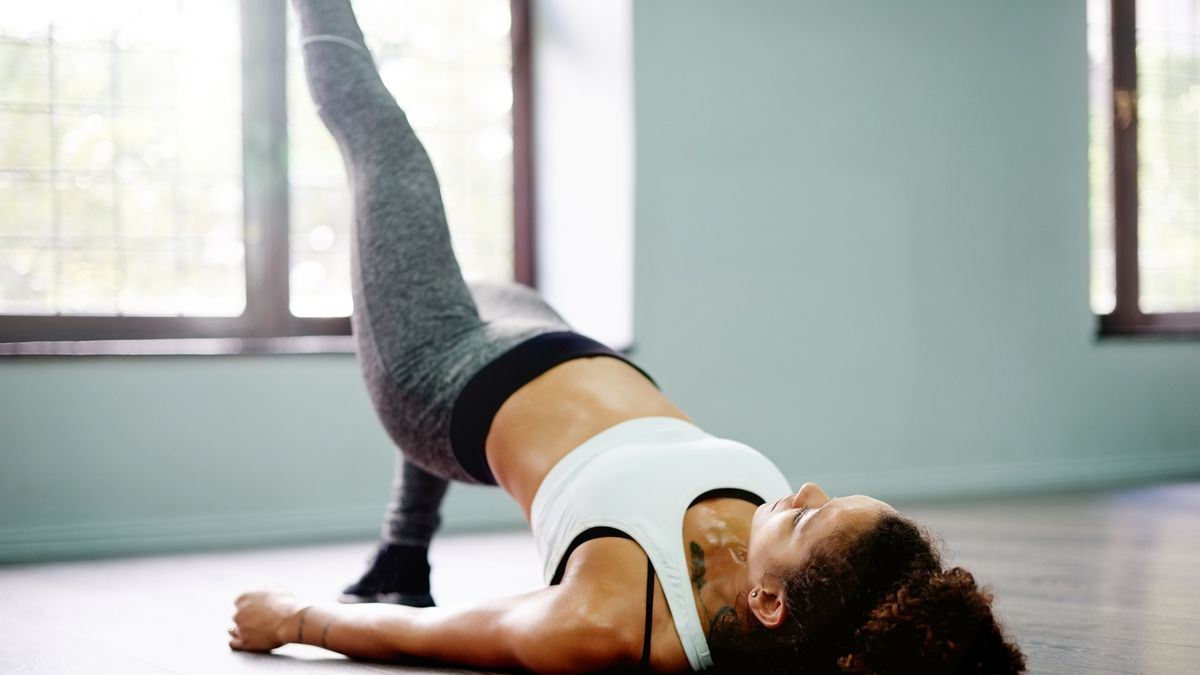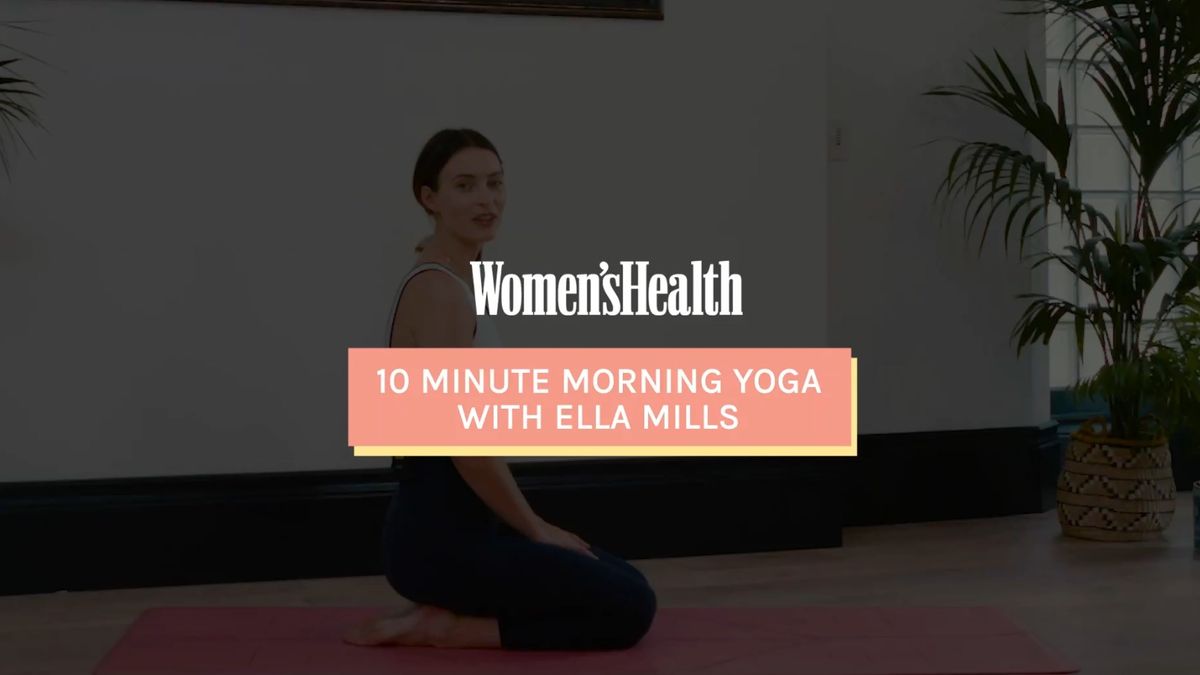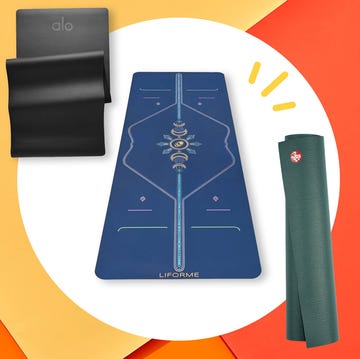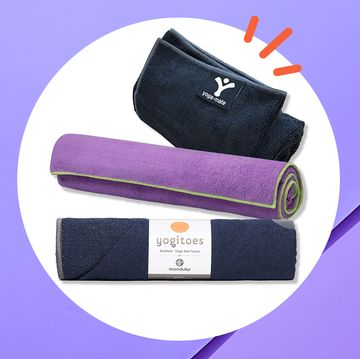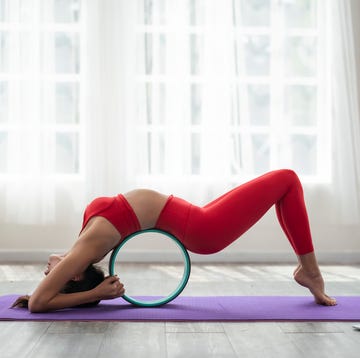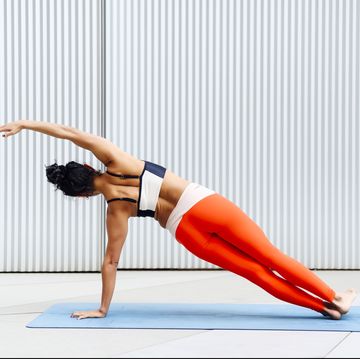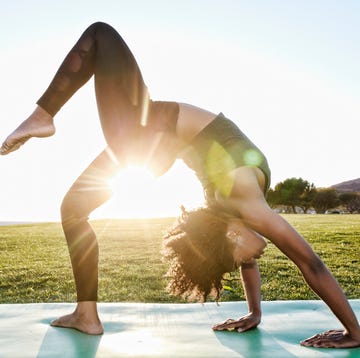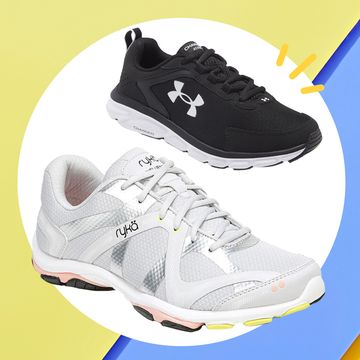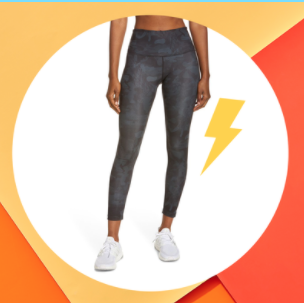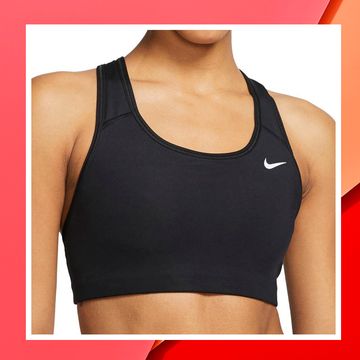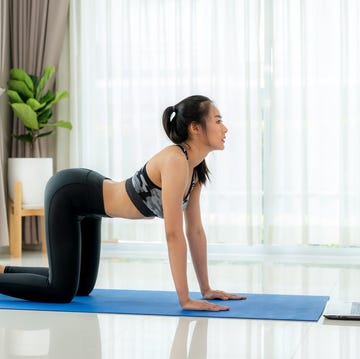Allow me to pose a question: How do you stay active when an injury sidelines you? Yoga or Pilates perhaps?
That’s what I did when a calf tear hobbled my go-to runs early in the pandemic. Not moving was not an option. Pleasantly surprised by Pilates, I maintained my strength, and sanity, until I could lace up my running sneaks again. (But I didn’t stow away my mat.)
Both yoga and Pilates are low impact, welcoming for all fitness levels, and gentle on your joints. In fact, they can reduce the risk of an injury in the first place. These mat modalities complement other routines and are way more than a plan B. In yoga and Pilates, “you are increasing awareness of your body and breath, and you are often encouraged throughout the class to focus on your breathing technique to keep you strong and centered,” says Jacqui Kingswell, certified Pilates instructor and co-founder of The Pilates Class.
Use this guide to learn the ins and outs of Pilates and yoga, what benefits to expect from each practice, how the two mind-body modalities compare, and how to pick the best practice for your goals according to certified yoga and Pilates instructors and training experts.
The Difference Between Yoga And Pilates
While both yoga and Pilates are low-impact exercises and can be performed on a mat, they're actually totally different workouts.
Yoga is an ancient Indian practice that dates back 5,000 years. It includes posture, breathing, and meditation to promote both mental and physical well-being. The intention of yoga is to deeply connect with the mind and body by holding and advancing physical poses while focusing on breath, says Dana Brown, CPT, operations director at Privé-Swiss Fitness. Yoga began as a primarily spiritual practice that evolved to include more physical poses in the 1900s.
Pilates is much younger. Joseph Pilates developed the method in the 1920s to help injured veterans during World War I. He originally called it contrology, and he taught the use of the mind to control the muscles, with a focus on the core. The goal of Pilates is to develop the muscles uniformly and create a sense of postural awareness through activation and stabilization, says Brown. It involves moving through slow, precise, strength exercises with breath control (though the breathing methods within yoga and Pilates aren't always the same). Pilates focuses heavily on core strength and stability.
Breath work is important in both yoga and Pilates, but how it’s used distinguishes the two modalities. “In Pilates you will engage your core on the exhale and yoga will practice the opposite,” Kingswell says.
Additionally, yoga has more style variety than Pilates. Some of the most common types of yoga include vinyasa, hatha, Bikram, and yin yoga, with varied flows and speed. “Most styles of yoga have been transformed over the years by the founder of each lineage," says certified yoga teacher Gabby DeLorenze, founder of Soul to Sole Wellness.
Here's a 10-minute yoga routine to give you a feel for what a typical flow could look like:
How you move through the exercises is unique in each. "Most yoga classes involve flowing through a series of poses (like downward dog, tree pose, warrior pose, and cobra) that utilize your body weight as resistance," says Cedric Bryant, PhD, president and chief science officer at the American Council on Exercise. "The focus is on improving balance, flexibility, and the mind-body connection."
What's more, "Pilates tends to be a bit more fast-paced than yoga, and there's not typically as much focus on mindfulness throughout classes," says Bryant.
There are two main variations of Pilates, classical and contemporary. Classical style runs you through 34 of the same exact moves (Some names you may recognize are the roll up, spine twist, jack knife, and the all-time classic abs move the Hundred) in the same exact order every session.
Contemporary style Pilates takes creative liberties with the founder’s exercises, adding choreography, training from other fitness modalities (lunges, plank variations, and more bodyweight moves), and physical therapy. “Pilates uses both bodyweight and external resistance apparatus like the reformer, while yoga generally uses just bodyweight,” Brown says.
The Benefits Of Yoga
Practicing yoga is oh-so-good for the mind and body. Just ask any yogi or one of its many famous fans (Jennifer Aniston, Alexandra Daddario, Lady Gaga, and more).
Yoga supports body awareness, strength, balance, flexibility, and mobility, per DeLorenze. “Research shows that yoga helps with back pain, eases arthritis, and even teaches people to breath with their diaphragm, which increases vagal tone (your connection to your parasympathetic nervous system, a.k.a. rest and digestion!),” she says.
Yoga may help with depression, and anxiety, while protecting brain function and potentially decreasing inflammation in the body, just to name a few of the research-backed boosts.
The feel-good sensations extend to your mental wellbeing, too. (Hello, stress relief.) “A regular yoga practice creates a deep union of mind, body, and spirit,” Brown explains. Yoga helps develop an inner awareness, according to a recent study by Harvard Health. “This awareness led participants to create a better body image of themselves, trust in their body’s capabilities and enhanced overall mindfulness,” says DeLorenze.
Yoga has a significant impact on physical health. “Along with mindfulness, cardiovascular health risks were lower in those who practiced yoga,” says DeLorenze. “Researchers found lower blood pressures, resting heart rates, and blood sugar levels.”
The Benefits Of Pilates
That burn you feel in the middle of class is worth it for the mind and bod boosts Pilates brings. (There’s a reason a ton of super fit celebs—Kate Hudson, Miley Cyrus, Jenna Dewan, and more—swear by the modality.)
It engages muscles all over with moves that help balance and strengthen the bod and improve flexibility. That adds up to a lower risk of injuries, per Kingswell. It also counteracts poor posture habits, like hunching over the computer screen or phone.
Hitting the Pilates mat on the reg improves muscular endurance and flexibility, per a study in the Journal of Strength and Conditioning Research. What’s more, eight weeks of a Pilates routine improved participants’ flexibility in a study published in the Journal of Sports Medicine and Physical Fitness.
You’re likely to feel lighter and more at ease after class. Pilates releases tension in both the mind and body, and teaches control, precision, and balance. “After each class you can walk away from the moves feeling like your body has been stretched out for the day and you can walk into the rest of the day feeling aligned,” says Kingswell.
Try these 12, no-equipment Pilates moves to start building strength:
There’s science to back up that mood-lifting effect, too. Pilates enhances mindfulness and sensory awareness, which may lead to improved mood, feeling more relaxed, and reduced stress, according to a study published in the Journal of Dance & Somatic Practices. Other studies show Pilates eases lower back pain.
Pilates has the potential to help with weight loss, if that’s your goal. Women who did Pilates three times a week for eight weeks lost weight and inches in their waist and improved their BMI, in one small study from Pamukkale University in Turkey. (Worth noting, the women in the research were overweight and inactive beforehand.)
Which is better: Yoga Or Pilates?
The answer is different depending on what you want from your exercise routine. “When it comes to whether yoga or Pilates is better for your body, it really all depends on your goals,” says Bryant.
If one of your goals is better performance in your other activities, Pilates may have an edge. “With Pilates, there’s always a focus on core strength and stability, so if you have back issues or play sports that require a strong core, that workout will be beneficial for you,” says Bryant. “If you’re looking for a low impact workout that will still majorly challenge your muscles, Pilates will give you the burn and shake you’re looking for.”
But, if you’re all about finding zen, yoga is for you. “If you’re seeking increased flexibility, relaxation and a better mind-body connection, yoga is the way to go,” says Bryant. “For many people, yoga is not only a workout, but a chance to destress and recenter.”
Whoever is leading your yoga or Pilates class also makes a big difference in how effective the exercise is. “The key to long-term success is consistency so find an instructor, studio or class that motivates you to stick with it!” says Brown.
“The hardest part is starting, once you’re on your mat and you begin the movement, everything from then on is just a bonus,” says Kingswell. Ready, set, roll out that mat.
Bottom line: Yoga and Pilates are complementary workouts, and they both offer mind and body benefits. The best modality is the one that matches your fitness goals and you enjoy practicing regularly.
